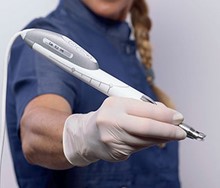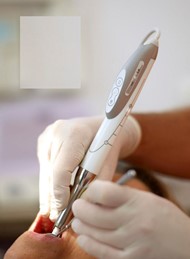Anesthesia
Thanks to modern dental techniques, a visit to your dentist does not have to be annoying.
There are several means to make your dental visit in a relaxed, comfortable way.

When do you need anesthesia?
A check-up at the dentist is usually over in no time, but there are a number of treatments that cannot be performed without anaesthetic, as they are otherwise too painful. The extraction of a tooth or a root canal treatment are examples of this.
Anesthetic is not always necessary when filling a cavity. Often no anesthetic is used for a small hole. If you would still like an anaesthetic, you can always discuss this. The other way around is of course also possible: in consultation, the dentist could first start the treatment without anesthetic and only administer the anesthetic if the treatment becomes too painful. However, with sedation you can lie more calmly in the chair if you know that it will not hurt. Discuss with your dentist whether anesthetic is necessary or if you find this a more pleasant idea.
ways of anesthesia
1: Conventional Anesthetic
With surface anesthesia, an anesthetic ointment, gel or spray is applied to the gums with a cotton ball. This can also be applied to young children with pain when the teeth come through.
With conduction or infiltration anaesthetic, anesthetic fluid is administered via a needle to the tooth being treated. For the lower jaw, half of the jaw is often anesthetized. Conduction or infiltration anesthesia is the most commonly used method of anesthesia. With intraligamentary anaesthetic, anesthetic fluid is placed around the tooth via a shorter needle, between the root and the jaw bone.
In the case of intrapulpary anaesthesia, the root canal itself is anaesthetized. This is used if the anesthetic applied appears to be insufficient during a root canal treatment.
2: Intraosseous anesthesia (QuickSleeper ®)
Intraosseous anesthesia is a new technique of anesthesia in dentistry. The bone is anesthetized using a small computer-controlled needle. Because there are no nerves in the bone, you experience no pain. This technique is still emerging and is not yet used by all practices.
Recently, our practice has a Quicksleeper®, this is a virtually painless anesthetic system. The anesthetic fluid is administered via a computer-controlled system, so that no painful pressure is built up and less anesthetic is needed.
The anesthesia is very targeted and only where necessary. In addition, the anesthetic works immediately and there is no numbness of the lip, tongue or cheek afterwards.
This method of anesthesia is experienced as positive and can also be used with children. We also call this type of anesthesia “digital”, “droplets” or “pen” anesthesia.
Which type of anesthetic or drug is used depends on the type of treatment and your medical situation (condition or allergy).

Costs
The costs for an anesthetic are not included in the basic package for adults. Reimbursement of (part of) the costs comes from your additional dental insurance.
Risks
Anesthetic is not without risks. It is very important to let your dentist know what medicines you are taking, what your medical situation is (e.g. condition or allergy) and whether there have been any problems in the past during or after a local anaesthetic. During the anesthetic, your lip and tongue will tingle and feel thick. This will disappear when the anesthetic wears off. Do not eat or drink hot food or drinks until the anesthetic has worn off completely to avoid burning yourself. In children, be very careful not to chew their tongue or cheek. This can cause a wound without them noticing.
In exceptional cases, the anesthetic does not work. Then it may be that a nerve is (temporarily or permanently) damaged. Do you suspect this is happening to you? Then contact your dentist.
If anesthetic fluid accidentally gets into the blood vessel while the anesthetic is being applied, it can cause palpitations and you can feel bad. Always report this to your dentist immediately. Sometimes the anesthetic doesn't work. Causes can be severe inflammation, extreme anxiety or drug and alcohol use.
Alternatives
There is no alternative to anesthesia. However, some treatments can be performed without anaesthetic.
Source: KNMT , All about the teeth
Come visit us!
- info@mondzorg-valerius.nl
- +31 0 70 870 1466
- Valeriusstraat 25, 2517 HM The Hague